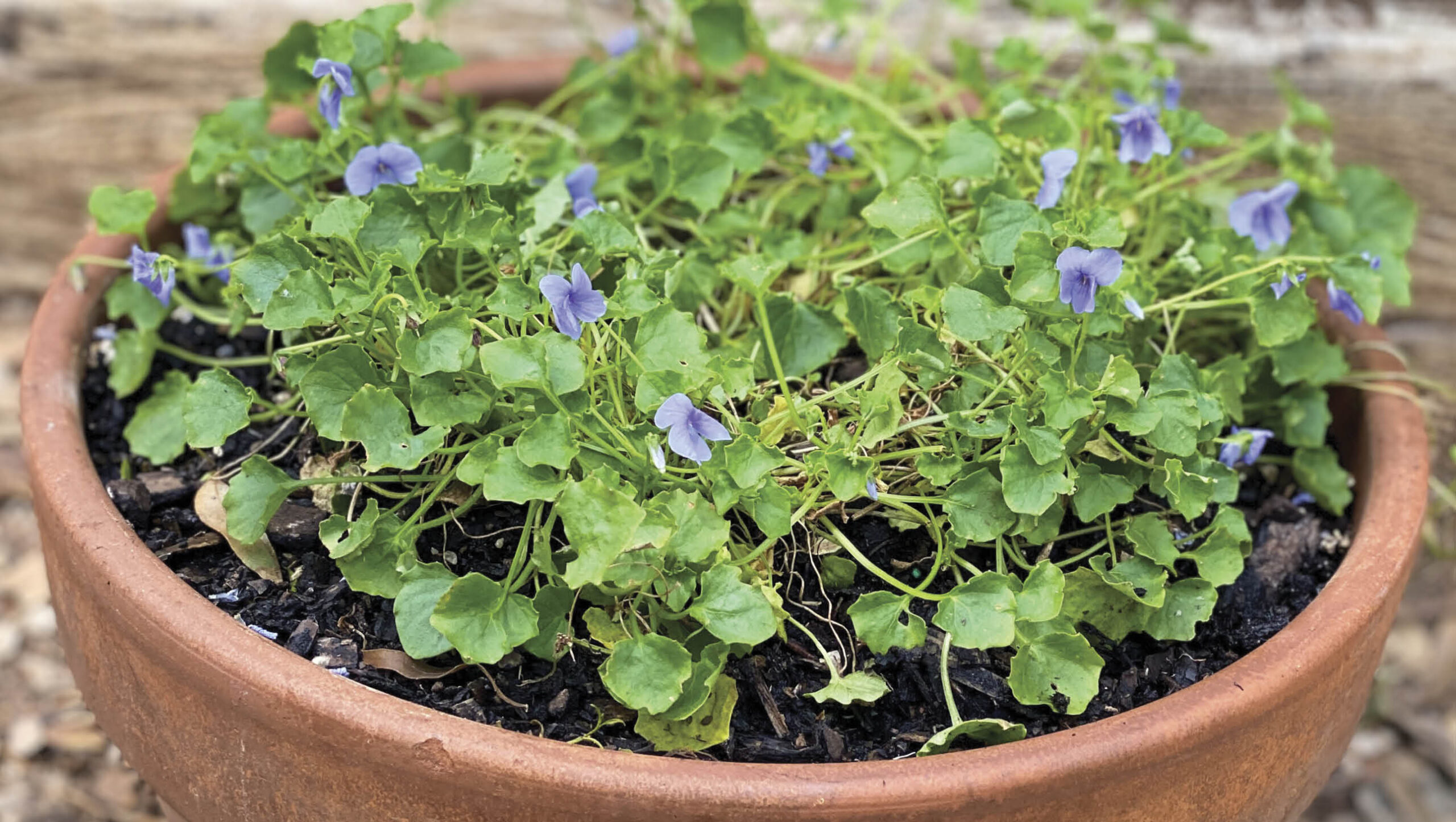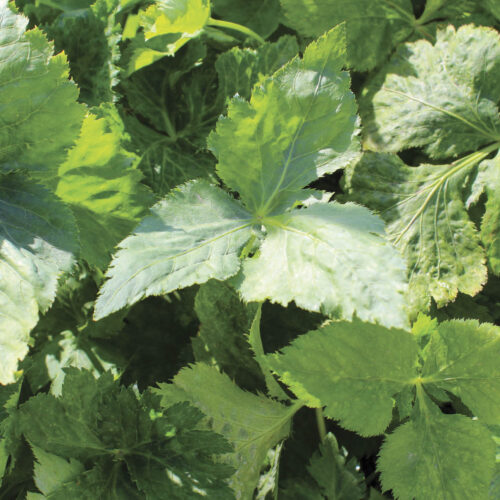Potting up natives
2025-12-16T14:22:02+11:00
Edible natives grown in pots are a great growing choice if you have a small space or balcony.
For those of us who garden on balconies or in small spaces, growing in pots is often the only option. Aussie natives that are edible are multipurpose plants that offer colour, texture and flavour. These favourites are definitely worth adding to your collection.
Native violet
Viola hederacea and V. banksii
Size: 10cm x spreading
Light: Morning sun, light shade
Flowers: spring, summer
Time to harvest: approximately 2–3 months
Harvest: Pick young leaves and flowers to use raw
Pests: Mildew on leaves
Cultivars to look for: ‘Monga Magic’ (pictured above)
Native violets are easy-to-grow groundcovers that grow well in pots, often cascading over the edge of the pot or hanging basket. Too much shade means less flowers, and afternoon sun often causes leaves to yellow, so finding the Goldilocks spot results in lush plants with lots of dainty flowers, mostly in spring and summer. Young leaves and flowers can be tossed into leafy salads or use flowers to decorate cocktails and fruit salad.
Pepperberry
Tasmannia lanceolata
Size: Approximately 100cm x 50cm in a pot
Light: Shade, part shade
Time to harvest: 6–12 months for leaves, 2–3 years for berries
Harvest: Pick mature leaves and berries to use fresh or dried
Pests: Scale, sooty mould
I grow this native edible in a pot, as it does so much better than in the ground. I often grow two plants in the same pot (around 40cm diameter), a male and a female plant, so I get to harvest some spicy berries. Buy from nurseries who stock cutting grown plants, labelled male and female. These plants do not like to dry out, so you could try them in a self-watering pot. Harvest mature leaves for drying and grinding; the dull-green powder is used like a ground pepper.
There are many more native plants that grow happily in pots. Learn about them in Karen’s feature in our Summer 2026 issue, available here.







